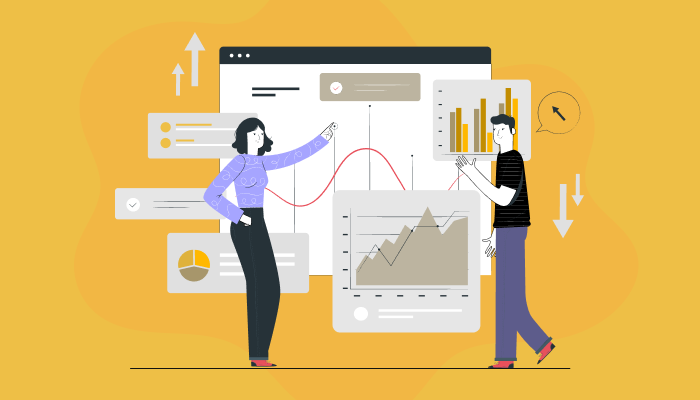In today’s world, the online reputation of a brand can make or break its success. But did you know that you don’t need to spend big bucks to keep an ear to the ground? Let’s dive into how you can leverage free social listening tools to gain valuable insights and maintain control over your brand’s online narrative.
What Are Free Social Listening Tools?

Social listening tools are platforms that track and analyze online conversations about a brand, product, or relevant topics. Unlike traditional monitoring, social listening dives deeper, providing context and sentiment behind the mentions.
Understanding the Importance of Social Listening
Why is social listening essential? It allows brands to understand audience sentiment, identify pain points, and respond proactively to customer needs. Think of it as a digital “ear to the ground,” allowing brands to stay in tune with customer perspectives.
How Social Listening Differs from Social Monitoring
While social monitoring focuses on tracking specific mentions or tags, social listening explores the broader context. Instead of simply seeing that your brand is being mentioned, you gain insights into how people feel and what they’re discussing.
Why Use Free Social Listening Tools?
Not every business has the budget for paid social listening platforms. Fortunately, many free options are available to get started with listening to your brand’s audience.
Benefits
Social listening helps brands:
- Understand customer sentiment
- Track competitors’ activities
- Identify industry trends
- Enhance customer engagement and support
Top Free Social Listening Tools to Consider
Let’s explore some top free social listening tools to help you begin monitoring your brand’s presence online.
Tool 1: AIM Insights Free Trial
Features Available in the Free Version
AIM Insights offers a free trial that includes sentiment analysis, allowing you to capture the emotional tone behind mentions.
Using AIM Insights for Social Listening
If you have a campaign or event, use AIM Insights’ free trial for a limited but effective burst of social listening.
Tool 2: Google Alerts
Overview and Key Features
Google Alerts is one of the most straightforward tools for tracking keywords across the internet. When a new mention occurs, you’ll receive a notification.
How to Set Up Google Alerts for Social Listening
- Go to Google Alerts.
- Enter your desired keywords.
- Customize your settings (frequency, sources, etc.).
- Start receiving email notifications whenever your keywords are mentioned.
Tool 3: Hootsuite Free Plan
What Hootsuite Offers for Free
Hootsuite’s free plan allows you to manage up to two social media accounts, making it a great tool for beginners.
Best Ways to Use Hootsuite for Social Listening
Set up keyword streams to follow conversations around your brand and competitors in real-time, helping you stay on top of trending topics.
Tool 4: TweetDeck
Features and Capabilities of TweetDeck
TweetDeck is a Twitter management tool that allows you to view multiple columns at once, making it ideal for monitoring real-time Twitter activity.
Using TweetDeck to Monitor Twitter Conversations
You can set up columns for hashtags, keywords, and account mentions, which gives you a comprehensive view of the ongoing conversation.
Tool 5: Talkwalker Alerts
Introduction to Talkwalker Alerts
Talkwalker Alerts is like Google Alerts but includes more social media coverage. It’s particularly useful for tracking brand mentions.
How to Leverage Talkwalker for Effective Social Listening
Use Talkwalker Alerts to monitor keywords and receive instant updates on relevant online conversations across various platforms.
How to Make the Most of Free Social Listening Tools
Maximize your results by following these tips to get the most from free tools.
Setting Up Keyword Alerts
Identify the main keywords for your brand, competitors, and industry. These keywords are your roadmap to find relevant conversations.
Monitoring Competitor Mentions
By tracking your competitors, you can identify their strengths and weaknesses, learning from their experiences to improve your own strategies.
Tracking Customer Feedback
Use social listening to keep an eye on customer feedback and react swiftly, showcasing that you value their opinions.
Best Practices for Using Free Tools
To get the most out of free tools, a few best practices can go a long way.
Combining Tools for Comprehensive Coverage
Each tool has its strengths and limitations. Using a combination of tools like Google Alerts, Talkwalker, and AIM Insights ensures better coverage.
Setting Realistic Expectations with Free Tools
Understand that free tools come with limitations, but they’re great for basic listening needs and identifying overarching trends.
Conclusion
Starting with free social listening tools is a fantastic way to dip your toes into understanding your brand’s online presence. With tools like Google Alerts and AIM Insights, you can begin to capture valuable insights without spending a dime. As your business grows, you might find that investing in a more advanced, paid solution is beneficial. If you’re ready to take your social listening to the next level, consider requesting a demo from AIM Technologies to explore how our cutting-edge tools can support your brand’s success in a competitive market.
FAQs
How does social listening impact customer service?
Social listening helps you respond to customer concerns faster, providing better service and showing that you care about feedback.
Are free social listening tools enough for a small business?
Yes, free tools are often sufficient for small businesses, offering essential insights without a large investment.
Can free tools monitor all social media platforms?
Most free tools have limited platform coverage, but by combining them, you can get a broader perspective.
How often should I check my social listening tools?
Regular checks—daily or weekly—are ideal to stay updated on conversations relevant to your brand.
What’s the main difference between social listening and social monitoring?
Social listening explores the context and sentiment of mentions, while social monitoring tracks specific mentions and engagements.




